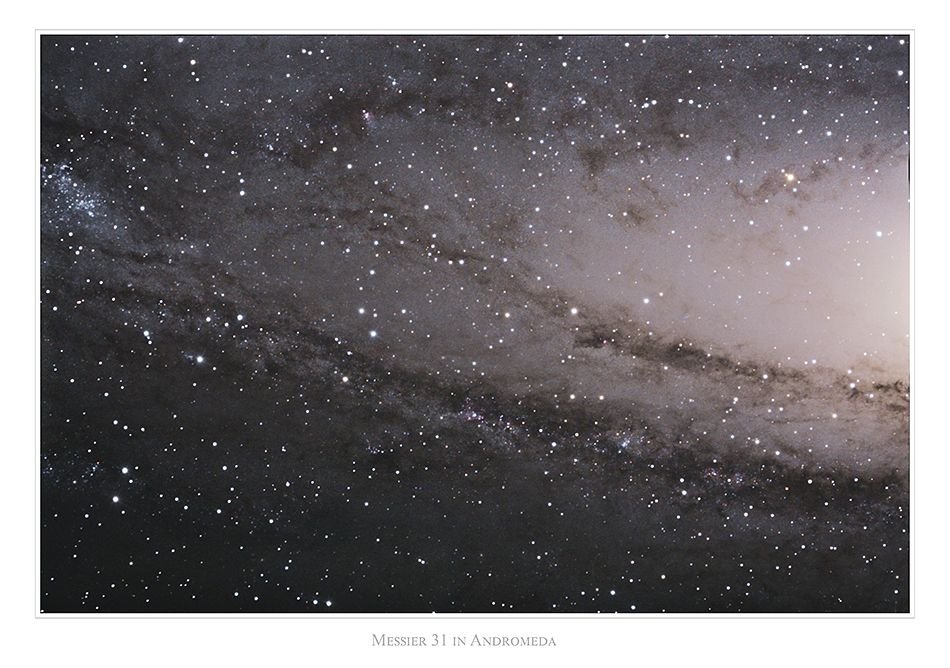The spiral galaxy Messier 31 ("Andromeda Galaxy", "Great Andromeda Nebula", NGC 224) in the constellation of Andromeda
on October 15 / 16, 2017. Messier 31 is the nearest major galaxy to our Milky Way. It is 2.5 million light-years from Earth, measures 140'000 - 220'000 light-years across
(depending on the source) and consists of one trillion stars. It is visible to the naked eye. The Andromeda galaxy will "collide" with our Milky Way in 4.5 billion years
and merge to form a giant elliptical galaxy or disc galaxy (source: Wikipedia).
Twenty-three exposures of 3 minutes at ISO 800 were stacked with no dark frame subtraction with Deep Sky Stacker (resulting in a 1 h 09 min exposure) and further processed in
Photoshop. The image only shows a small part of the galaxy - probably as many as 20 images would be needed to cover the full extent of the object.
|
Equipment: Canon EOS 450D Baader modified camera, TeleVue Paracorr Type II coma corrector,
16" f/4.5 "Ninja" dobsonian telescope riding on a dual-axis Tom Osypowski equatorial platform,
Lacerta MGEN autoguider, Lacerta off axis system (field of view comparison:
image of the moon with the same equipment).
|










